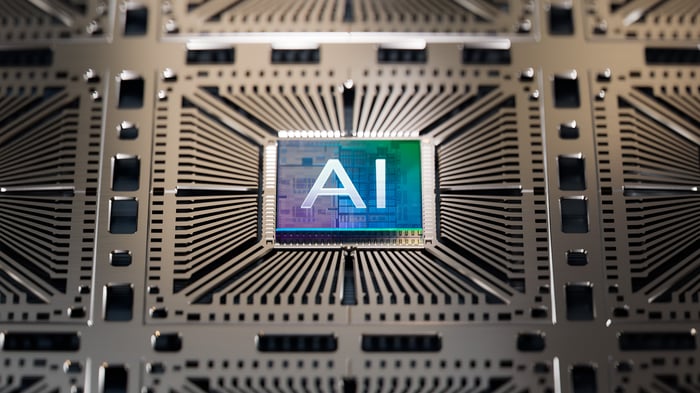March Madness Highlights Human Imperfection Amid Robotic Advancements
The NCAA championship game occurred yesterday, and as a former college basketball player and devoted fan, I was fully engaged. March Madness embodies buzzer-beaters, Cinderella stories, and thrilling performances. This year’s event served as a needed diversion from the turmoil unfolding on Wall Street.
What truly enhances the thrill of the game?
The mistakes – missed shots, turnovers, and defensive mishaps that leave a shooter unguarded in the corner. The heartache and unpredictability contribute to the game’s drama.
If the players executed flawless performances, the excitement would diminish significantly; the game would become too predictable and mechanical.
On a related note, the emergence of AI technology raises questions about the future of sports. I believe we are approaching a time when AI-driven robots could successfully play basketball. I’ve witnessed humanoid robots performing tasks ranging from dancing to flipping burgers and shooting hoops. In just a few years, they might master basic basketball plays.
However, let me clarify: robots will never truly replace humans on the basketball court. The essence of the game — the unpredictability stemming from human errors — is what makes March Madness exciting.
This uniqueness is exclusive to sports. While basketball’s charm arises from mistakes, errors in warehouses, on highways, or at shipping docks? Those mistakes can be costly and dangerous. They can disrupt supply chains, damage property, and even result in loss of life.
That’s why we anticipate a significant shift towards robotization in these sectors.
The Future Is Robotic
Current trends indicate that this transformation is not just a vision for the future — it is occurring right now.
Take a look at Symbotic (Stock-ticker”>SYM), for example.
This company is not focused on creating entertaining robots; instead, it has developed a comprehensive end-to-end warehouse automation system.
Symbotic employs fleets of smart, autonomous robots that improve the sorting, storage, and movement of goods with greater speed, cost-effectiveness, and almost flawless precision.
So impressive is this technology that Walmart (Stock-ticker”>WMT) has partnered with Symbotic to automate all its regional distribution centers across the U.S.
This decision underscores the world’s largest retailer’s confidence in robot supremacy within a highly intricate operational landscape.
Why such trust? Because robots don’t get fatigued, call in sick, or make devastating mistakes.
This advancement isn’t limited to fulfillment centers; robotic technology is impacting mainstream industries too.
For instance, Waymo, a subsidiary of Alphabet (Stock-ticker”>GOOGL), has introduced a fully functional self-driving system, already operating in real-world robotaxi services. You can summon a driverless car in Phoenix, San Francisco, L.A., or Austin today.
These systems are constantly improving, becoming smarter and safer every day.
According to Waymo’s Safety Impact metrics, by December 2024, it logged 50 million miles driven solely by riders without human intervention. When compared with human drivers, the data shows a significant safety advantage:

Meanwhile, Tesla (Stock-ticker”>TSLA) is developing Optimus, a humanoid robot currently employed at its factories. Meta (Stock-ticker”>META) has recently formed a new unit focused on humanoid robots. Reports suggest that Apple (Stock-ticker”>AAPL) is also creating a set of robotic systems designed for smart home applications. Alphabet has invested in startups like Apptronik, while Nvidia (Stock-ticker”>NVDA) focuses on developing AI models tailored for embodied intelligence: robots capable of perceiving and interacting with their environments.
AI 2.0: The Era of Humanoid Robots
Presently, the focus remains largely on AI chatbots. While innovations like ChatGPT, Grok, and similar technologies are impressive and impactful,
these entities largely exist within digital realms, functioning in the cloud, browsers, and mobile apps.
Currently, their effectiveness is largely in assisting research, enhancing communication, or automating customer service. This reflects a stage we consider AI 1.0.
Looking ahead, the subsequent phase of AI will emphasize the physical domain, merging intelligence and motion.
We are entering the realm of AI that can react to real-world environments: embodied intelligence that can seamlessly engage with our daily lives.
The Rise of Humanoid Robots: A Trillion-Dollar Investment Opportunity
See, hear, walk, talk, lift, carry, organize, fix, learn…
This is where we pinpoint the next trillion-dollar investment opportunities.
The growing interest from tech giants in humanoid robots is no coincidence. To perform useful tasks—be it in a home, factory, or store—a robot must navigate environments designed for humans.
The humanoid design proves compelling in this regard. A robot modeled after human capabilities can engage with tools, machinery, stairs, doors, and even obstacles. Its versatility across various tasks and industries positions it as a general-purpose labor platform, akin to how computers serve as universal computation platforms.
Tesla’s pursuit of Optimus embodies this vision. Likewise, companies such as Meta, Apple, and Microsoft are quietly developing essential tools and frameworks for humanoids. Reports indicate that OpenAI is also exploring robotics hardware.
As these robots achieve operational effectiveness, demand will soar across every economic sector, potentially leading to the wide acquisition of these machines.
The Future of Robotics
While it’s not ideal to expect a robot to participate in an NCAA title game, they can substantially enhance everyday living. Many could benefit from robots that clean homes, unload groceries, assemble furniture, care for pets, patrol properties, or assist aging parents.
The possibilities are extensive. Interestingly, these robots are on the verge of readiness, already functioning in controlled environments. The critical remaining factor is mass deployment.
This moment is significant. We anticipate witnessing a physical AI equivalent of a Cambrian explosion in the next few years.
Companies leading this transformative shift may emerge as the biggest success stories of the next decade.
So, where should investors focus their attention?
Consider looking for companies that are:
- Developing hardware platforms such as Optimus and Apptronik
- Creating robot operating systems (Meta, Nvidia, OpenAI)
- Providing AI chips, sensors, and actuators
- Fostering integration services suitable for homes, factories, and retail spaces
In essence, the era of AI 1.0 gains is winding down. It’s time to scout for potential AI 2.0 winners—those integrating AI with robotics. This intersection is where real growth lies.
The Robot Revolution will not shout its arrival; instead, it will subtly enhance efficiency and cut costs—pragmatic applications that make solid business sense.
Before we know it, robots will be ubiquitous.
Last night, we watched passionate athletes compete in a basketball game—an experience we relished. Now that the Florida Gators have secured their championship title, the focus shifts back to work. Increasingly, that work will be performed by robots rather than people.
While the AI boom initially revolved around code, its future rests on movement.
This movement is poised to influence markets as well.
Explore some of the robot stocks we currently favor.
On the date of publication, Luke Lango did not hold (either directly or indirectly) any positions in the securities mentioned in this article.
P.S. Stay informed about Luke’s latest market insights by reading our Daily Notes! Check out the latest issue on your Innovation Investor or Early Stage Investor subscriber site.







